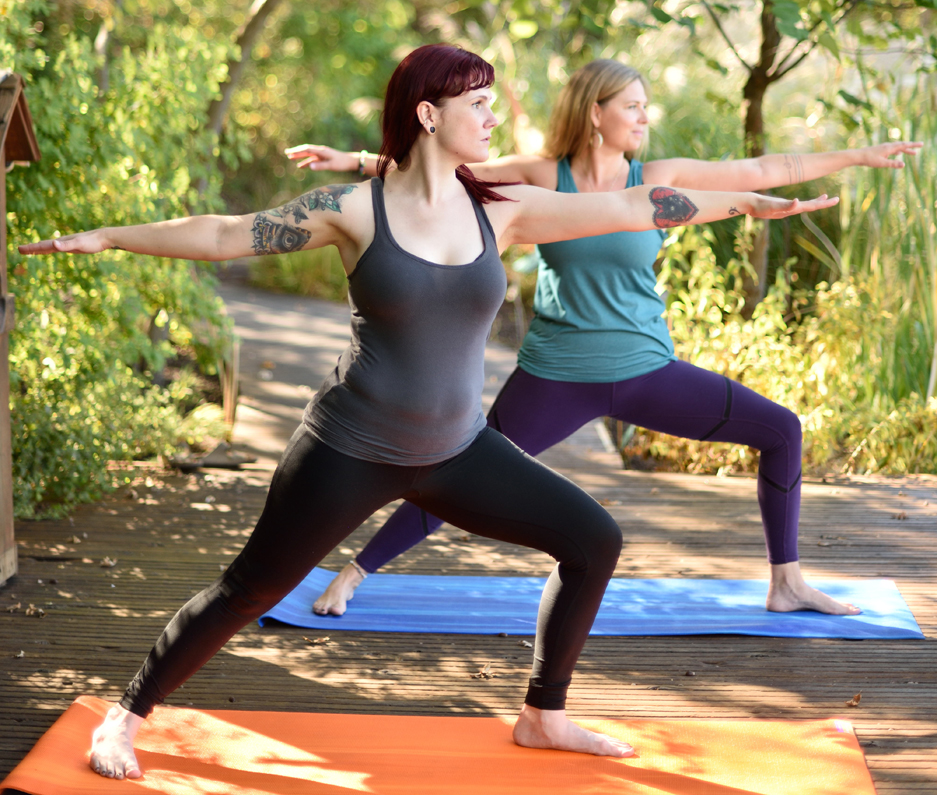This entry was posted on October 13, 2025 by Charlotte Bell.

Images of witches, ghosts, black cats, zombies and skeletons abound this month. These iconic images are meant to be scary, and some of them are, although I have to say, having lived with a few black cats in my life, they aren’t scary at all. Halloween images, however, are meant to evoke a bit of fear and apprehension.
When you see a picture of a skeleton, the first thing that comes to mind probably isn’t osteoporosis. Nonetheless, according to the National Osteoporosis Foundation, 10 million of us are currently living with osteoporosis and 34 million are currently at risk of the disease.
How can yoga help?
There are many simple things you can start doing now, at any age, to prevent disease: eat lots of fruits and vegetables, exercise regularly, increase your intake of vitamin D and calcium/magnesium. But if you’re reading this blog, you probably practice yoga. Is yoga considered an exercise that can help keep your bones strong?
Dr. Loren Fishman says yes. In this interview (read the whole thing, it’s very informative), he explains why yoga helps keep our bones strong:
“Yoga helps build bone mass, but because yoga poses pull and stretch bones from every angle imaginable, yoga can also stimulate bone formation. bone structure which is able to withstand greater pressures, as well as many types of challenges.
“…there are many other important benefits of yoga for people with osteoporosis, such as improving balance, muscle strength, range of motion and coordination, while reducing anxiety. These are other important benefits of yoga for people with osteoporosis, as they each help reduce the risk of falls.”
Yoga for osteoporosis
Here are my thoughts on yoga for osteoporosis, specifically how different classes of poses help keep your bones healthy:
Standing Poses and Balancing Poses: Promote balance, use weight bearing to strengthen bones, stretch leg muscles along bones, pull and stretch bones.
Back bends: Counteract the tendency to lean forward when your bones weaken.
Lateral twists and stretches: Keep the thoracic region (upper back) mobile.
Forward Curves: Reduce stress, stretching the muscles along the bones pulls and stretches the bones. Make sure that when you bend forward, you always bend from your hip joints and not your waist. If necessary, bend your knees to achieve this.
So don’t let your own skeleton scare you. Dive into your practice, knowing that not only does yoga make you feel good now, but it will likely make your life happier (and a lot less scary) in the future.
About Charlotte Bell
Charlotte Bell discovered yoga in 1982 and began teaching in 1986. Charlotte is the author of Mindful Yoga, Mindful Life: A Guide for Everyday Practice, and Yoga for Meditators, both published by Rodmell Press. Her third book is Hip-Healthy Asana: The Yoga Practitioner’s Guide to Protecting the Hips and Avoiding SI Joint Pain (Shambhala Publications). She writes a monthly column for CATALYST magazine and is the editor-in-chief of Yoga U Online. Charlotte is a founding board member of GreenTREE Yoga, a nonprofit organization that brings yoga to underserved populations. A lifelong musician, Charlotte plays oboe and English horn in the Salt Lake Symphony and the folk sextet Red Rock Rondo, whose DVD won two Emmy Awards.
